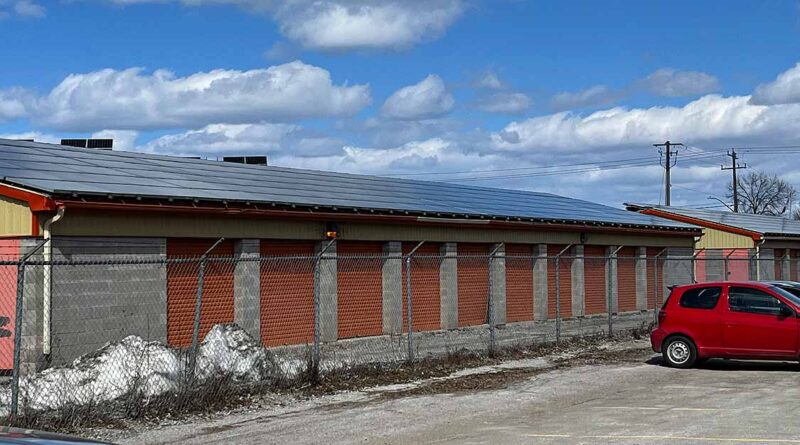Transitioning To Electricity Is Happening
By Gord Ball
There’s a movement underway. Everyone and everything is going electric! We’re moving from fossil fuels to a more sustainable, electric-powered future. The transition is called “electrification”—and we can’t do it fast enough.
What made Mike England of West Street Storage (just south of Nor-Weld Ltd’s large solar installation) decide to install a solar energy system on his roof?
“It was basically a financial decision,” England said. “At the beginning, when the company (London Ontario-based German Solar Corporation) first approached me, we saw it as an opportunity to establish another revenue stream for West St. Storage.”
“They told us the payback was going to be 6 to 7 years. We did have one surprise – we had to replace our old roof. Since then, we haven’t had a hiccup. It’s been a great deal. Essentially, we just rent our roof. We didn’t pay a dime. Our panels are covered with snow for some of the winter, but we still get a cheque every 3 months like clockwork.”
Some homeowners start their electrification journey in order to generate clean power that can be used or sold back to the electrical grid. Some are motivated by the thought of reduced hydro bills. Some want to reduce their greenhouse gas emissions. Some want to generate and store their own clean energy to keep their home running during power outages.
Tony Telford is president of Orser Technical Services in Orillia and an experienced local installer. He likes to balance optimism with realism. While some people have stars in their eyes over solar energy, others have questions.

“Help is available. Solar is a realistic option for home owners to offset some of their electricity costs. I am quite willing to discuss the pros and the cons with homeowners and businesses,” said Telford.
“Electrification is coming, absolutely. Solar energy will kick in soon. In the last ten years the efficiency of solar panels has gone up by 50%. In five years, there will be momentum – it will be a juggernaut. Every home being built right now will need to be ready for more than the typical 100 amp service.”
Telford suggested, “It would be worth exploring how Sustainable Orillia could put pressure on the City to pass a bylaw requiring all new single family dwellings to have a minimum 200 amp electrical service. This might be the single most effective way of helping prepare for the future electrification of our homes.”
Interested home or business owners should begin by figuring out the electricity consumption of their building.
“For example, my house needs roughly 54 KW hours each day. To power my household, I’d need 5-1/2 hours of sun each day on a 10KW system. Orillia has an average of 4.7 hours/day of solar hours. A small 2KW solar system (four 500w solar panels, inverter, etc.) will cost approximately $5/watt or $10,000. The payback period will be approximately 15 years,” Telford said.
For a small solar system, Telford recommends taking the following steps:
- Consult Hydro One to determine your capacity to deliver to the grid through existing lines.
- Is your roof profile favourable for maximum production potential? South-facing is preferred.
- Is your roof designed to withstand the additional weight of the panels? Make sure your roofing material is in good condition. This is sometimes overlooked.
- Typical production today is approximately 20 watts per square foot. Expect little production in the winter. Orillia had 23 days with no sun in January.
“Before long, our houses will have an integrated, bi-directional electricity system, integrating sun, wind, car battery and home battery,’ Telford said.
Long term, Telford believes the next step of power generation lies with wind. “Wind is the power source of the future – it’s not far away. Turbines have a low-intrusive profile and are cost-effective. Wind will become the way to go.”
Telford suggests it’s best if your electricity consumption is greater than your production (likely with a small system). If not, you’ll need to set up net metering where Hydro credits you with the excess at the same rate you are currently paying for your electricity. Hydro One will connect your solar generator to the distribution system under a fixed-price contract, delivering the electricity you produce to businesses and people across Ontario.
(Photos Supplied) Main: West Street Storage’s Solar Installation




